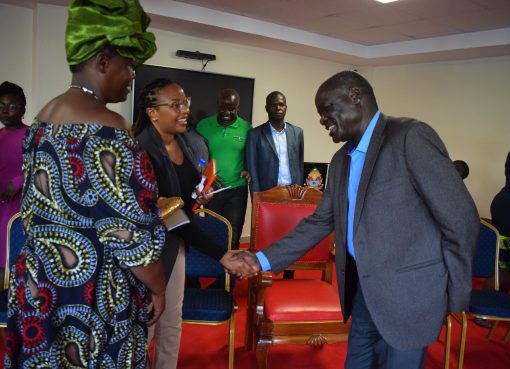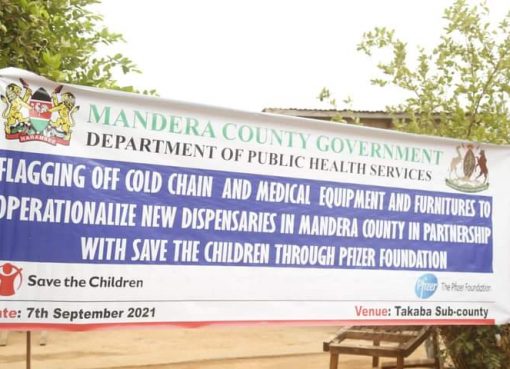World Health Organisation (WHO) has urged the Sub-Saharan African countries to continue being crucially vigilant as they prepare to mark the end-year festive seasons.
Dr Thierno Balde, WHO Africa Regional Covid-19 Incident Manager said that as the Covid-19 burden lessens, vigilance remains extremely crucial to fight off the scourge.
During the regional Covid-19 epidemiological update, Dr Balde lauded the African countries on the efforts they have put in place as he emphasised that the region’s health response systems have now improved tremendously.

Since the outbreak of Covid-19 in 2020, most African countries continue to witness a low surge in hospitalisations based on reported cases in recent weeks and less pressure on their health facilities.
The recent WHO report indicates that deaths rose by 14 per cent in the week ending in November, while a week earlier, they were low at 54 which is approximately 4 per cent recorded in the same period in 2021 and 2020.
The approximate cumulative registered death distribution in WHO African Region is East Africa (3 per cent), West Africa (7 per cent), North Africa (4 per cent), Central Africa (3 per cent) and South Africa (74 per cent).
The report, notes that most governments have lifted restrictive measures and new deaths and case fatality ratios (CFRs) remain low across the region despite a backlog reported in South Africa.
As of December 4, Kenya reports that the current daily number of patients in its emergency health facilities is 26 cases on average in the last seven days. It reported 342,107 cumulative cases which represent 38 per cent of all cases in the region.
Kenya’s attack rate was 654 per 100000 population, with 5,700 cumulative deaths with a CFR of 1.7 per cent. On the right trajectory, 336,000 cumulatively recovered which represents 98 per cent of cumulative cases and 411 active cases.
However, in the week ending November, South Africa and Mauritius recorded the highest number of Covid-19 new cases totaling about 3,000 and 5,500 respectively. The upsurge in cases reported in South Africa shows 4,045,000 cumulative cases, which is 45 per cent of all the cases in the region. It has had an attack rate of 7135 per 100,000 of its population in the last seven days.
“In African Region, cumulative cases is 8, 894, 000, cumulative deaths are 174,000 with CFR of 2 per cent, and cumulative recovered is 8,191,000 (92 per cent),” said Dr Balde during a recent virtual media briefing attended by selected regional journalists from Media for Environment, Science, Health and Agriculture (MESHA) in Kenya on December 13.
According to data from WHO released on November 9, Africa’s confirmed deaths were about 9,416,000 with South Africa accounting for 85 per cent of these deaths. He also pointed out that some WHO African member states have begun the integration of Covid-19 vaccination into primary health care services and routine immunization as seen in Kenya, Ghana and Nigeria.
On this note, WHO is recommending that countries should adopt more testing strategies that focus on detecting new cases among vulnerable groups like the elderly.
Detecting new cases, Dr Balde avers will limit transmission and help to monitor viral epidemiology and evolution.
With the Covid-19 investments made, Africa is now able to cope with the virus and they need to further strengthen their capacities to cope with a sudden surge in cases sparked by a new lethal and transmissible variant like New Omicron which is under monitoring.
Of Africa’s 1.4 billion population, WHO notes that only 26 per cent are fully vaccinated against Covid-19, while Cameroon is still undertaking mass vaccination drives.
The global health body also reports of huge strides the African region has made toward improving genomic sequencing. In 2022, WHO said that around 105,000 sequences were produced compared with 58,610 in 2021. Testing and genomic sequencing have dropped with new cases at a low level in recent months.
To safely achieve herd immunity against Covid-19, WHO supports that a substantial proportion of the population would need to be vaccinated, thus lowering the overall amount of virus, which can spread to the whole population. Majorly, herd immunity aims to keep vulnerable groups who cannot get vaccinated safe and protected from the disease.
Sero-prevalence surveys conducted, Dr Balde avers that in most countries, less than 10 per cent of the population has been infected with COVID-19 meaning that the vast majority of the world’s population remains susceptible to this virus.
Governments are still advised to build their capacities to detect, isolate, test and care for all cases, trace and quarantine all contacts; engage, empower and enable populations to drive the societal response and more.
By Rolex Omondi




